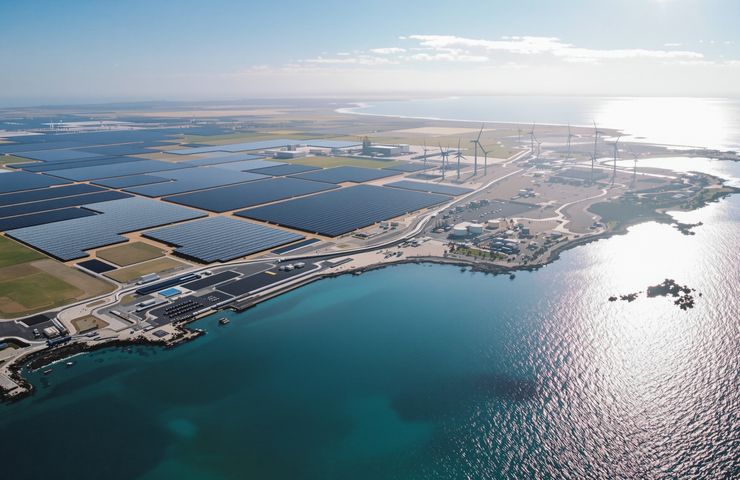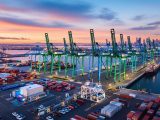
Coega Green Ammonia Project: EU Backs South Africa’s 3.5 GW Renewable Revolution
October 14, 2025Lightning-Struck Opportunity
Imagine you’re in South Africa and you uncover a plan that could flip the global energy playbook. In October 2025, European Commission President Ursula von der Leyen shone a bright light on the R105-billion Coega Green Ammonia Project, elevating it to flagship status in the EU’s green hydrogen roadmap. That nod of EU support cracked open doors to innovation funds and off-take talks, hinting that Brussels might become a major buyer of South African green ammonia to hit its net-zero targets. Rumor has it high-level EU delegations will be front and center at the Final Investment Decision ceremony—proof the political winds are blowing Coega’s way.
This venture is spearheaded by Hive Hydrogen, a dynamic partnership between the UK’s Hive Energy and South Africa’s Built Africa. Powered by the Carissa Wind Energy Facility, the goal is nothing short of colossal: churning out 1 million tonnes of renewable green ammonia every year. Nestled in the Coega Special Economic Zone near Nelson Mandela Bay—with deep-water berths at the Port of Ngqura and grid connections primed for power wheeling—it’s quickly becoming the poster child for clean, scalable renewable energy.
Breaking the Mold
Let’s be real: today’s fertilizer factories are spewing CO2 like there’s no tomorrow, chemical hubs burn gas, and ships remain one of the toughest sectors to decarbonize. With global ammonia demand set to hit 200 million tonnes by 2030, sticking with methane-based processes is like juggling lit grenades.
The Coega Green Ammonia Project throws that old playbook out the window: 3.5 GW of wind and solar fueling 1,200 MW of electrolysers—zero emissions. In September 2025, the Carissa Wind Energy Facility near Beaufort West scored its Environmental Authorisation, locking in 1,000 MW from 154 turbines to become South Africa’s largest permitted wind farm. That green hydrogen then flows straight into the ammonia plant and could even power future ammonia-fueled ships, slashing maritime CO2 by up to 100%. But green ammonia isn’t just for fertilizer—it’s a versatile platform chemical for plastics, pharmaceuticals, and mining, giving industries a roadmap to slash scope 2 emissions.
This isn’t a “nice idea”—it’s a potential lifeline for agriculture and industry across Africa, proving that strategic clean tech investments can boost food security and economic resilience.
The Magic Ingredient
So, what pulls all the pieces together? A well-oiled toolkit of proven tech:
- Electrolysis (1,200 MW): Linde-supplied units use renewable power to split water into hydrogen and oxygen—completely carbon-free.
- Hybrid Renewables (3.5 GW): Solar fields crank out 1,430 MW by day; Carissa’s turbines kick in 1,000 MW at night, with extra wind farms topping up to 1,879 MW.
- Water Treatment: On-site desalination and demineralization convert seawater into ultra-pure feedstock—no strain on local freshwater. Developers even estimate this could boost regional water supplies by about 25%, though independent checks are pending.
- Export Pipelines: Twin 7 km lines whisk green ammonia to dedicated berths at the Port of Ngqura, ready for global shipment.
It’s a plug-and-play setup built for industrial-scale reliability. Early studies promise steady output—rain or shine—giving investors the long-game confidence they need.
Strategy Behind the Innovation
Pulling off a $5.8 billion mega-project like this takes precise coordination. In September 2025, Hive Hydrogen sent out EPC invitations to 15 shortlisted contractors, down from an original 48 enthusiastic respondents.
They also secured R360 million in development finance at Cape Town’s Africa Green Hydrogen Summit, fuelling the Front End Engineering Design phase set for November 2025. With Strategic Infrastructure Project status and a green light from Blue Crane Environmental on the EIA, approvals sailed through. AMDA Developments leads the Carissa Wind Energy Facility, while Linde brings its electrolysis expertise—proof that powerhouse partnerships make big things happen.
The roadmap: lock in the Final Investment Decision by July 2026, break ground in early 2027, and commission the full system by December 2029. Government officials, private backers, and financiers will keep a vigilant eye, turning Coega into a global bellwether for mega-scale green hydrogen ventures.
Beyond Ammonia: Ripple Effects
The benefits stretch well beyond fuel production. Expect a wave of training programs in electrolysis, solar installation, and environmental monitoring—opening up fresh career paths for local talent. Small businesses around Nelson Mandela Bay will thrive too, as catering, logistics, and support services ramp up.
The local grid gets a boost in capacity and stability, paving the way for even more renewable energy projects. Developers knocked on doors with public consultations, ensuring villages around Beaufort West could weigh in on noise and traffic—proving big infrastructure can still be a good neighbor.
Meanwhile, the Port of Ngqura is gearing up with new jetties, liquid bulk storage, and upgraded rail links. It’s laying the groundwork for future green corridors—think hydrogen pipelines or battery storage hubs. The Eastern Cape’s economy could get a multi-decade facelift.
The Big Picture
South Africa isn’t just trying to keep up—it’s seizing a once-in-a-generation opportunity. Blessed with sun-soaked plains and the breezy Great Karoo, it’s one of the world’s prime spots for large-scale green hydrogen and renewable energy production. And Coega’s doorstep location at the Port of Ngqura makes exports to Europe, Asia, and North America practically seamless.
Energy Minister Kgosientsho Ramokgopa hailed Coega as a “lighthouse” project at the Africa Green Hydrogen Summit. Beyond the R105-billion price tag, we’re talking over 20,000 jobs, new vocational centers teaching renewable energy and chemical processing, and local supply chains getting a serious jolt—a bona fide regional economic reboot.
Universities and technical colleges are already collaborating with the project team, crafting courses to churn out the next wave of renewable energy engineers, electrolyser technicians, and marine fuel specialists.
Geopolitically, that EU nod signals a shift: South Africa could rival traditional ammonia exporters, offering secure, decarbonized product to Europe and beyond. It’s energy security—green edition.
Final Shot
Let’s be honest—green hydrogen has hovered just out of reach for years. But with Hive Hydrogen, Built Africa, solid EU support, and South Africa’s natural advantages converging at Coega, the moment of truth is here. FEED kicks off next month, construction begins in 2027, and by December 2029, the first green ammonia shipments will be under way.
This isn’t a lab demo—it’s a global-scale factory gearing up to transform fertilizers, feedstocks, and even marine fuels. Investors, policymakers, and clean energy champions: now’s your chance to ride the green hydrogen revolution. Blink and you’ll miss it—Coega is just getting warmed up!



 With over 15 years of reporting hydrogen news, we are your premier source for the latest updates and insights in hydrogen and renewable energy.
With over 15 years of reporting hydrogen news, we are your premier source for the latest updates and insights in hydrogen and renewable energy.